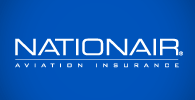 This is the second of two columns addressing winter operations in Twin Commanders. (The first, “Winter Operations: What To Do If Anti-Ice becomes Deice” can be seen here) If you are flying in the Northern Hemisphere, it is that time of the year to address some tips on operating in a very cold and/or icy environment. (ital this paragraph)
This is the second of two columns addressing winter operations in Twin Commanders. (The first, “Winter Operations: What To Do If Anti-Ice becomes Deice” can be seen here) If you are flying in the Northern Hemisphere, it is that time of the year to address some tips on operating in a very cold and/or icy environment. (ital this paragraph)
For the purposes of this column, let’s follow the sequences of typical preflight and inflight actions at very cold outside air temperatures, and discuss various topics as we progress.
First, however, note that, as always, procedures outlined in the specific pilot’s operating handbook (POH) take precedence over the tips outlined below. The following information is provided to aid you in proper engine operation. Additional procedures for flight in icing conditions will apply.
Preflight Inspection
Inlet: Remove the inlet covers and inspect the inlet for accumulation of ice or snow.
T2 Sensor (Bendix FCU): Inspect the inlet sensor for condition, security, and freedom from ice or snow accumulation.
P2T2 Sensor (Woodward FCU): Inspect the inlet sensor for condition, security, and freedom from ice or snow accumulation. Pay close attention to the P2 sensor inlet hole and the anti-ice air (P3 air) discharge hole at the tip of the P2 sensor. Both should be unobstructed.
Propeller: Carefully turn the propeller through. I suggest 10 to 20 blades to reduce as much as possible the drag imposed by very cold and congealed oil.
The following incident occurred several years ago in a northern U.S. location. During a preflight inspection, the pilot had noticed that ice had accumulated in both engine inlets, blocking both impellers.
Experiencing excessive resistance to hand-turning the prop, the pilot used force until the impellers could be freed.
After start, engine whine was so loud that it could be heard by the tower controller, who called the pilot and asked if there was a problem. Consequently, the engines were shut down, and a visual inspection revealed that both impellers were bent to the extent that the engines had to be disassembled and the impellers replaced.
Tailpipe: Remove the protective cover and inspect for ice or snow accumulations.
Engine Start
Batteries: Preheating the aircraft batteries under cold-soaked conditions will improve their performance. Removing and storing the batteries in a warm place overnight will also make a difference on starting capacities.
Note: Removing and reinstalling batteries may constitute a maintenance action and could, therefore, require an entry in the logbook and a sign-off by a certificated and/or licensed mechanic.
Taxiing
Oil Pressure: Oil pressure transients above normal limits are possible in cold ambient temperatures. Limit engine RPM as much as possible to minimum idle speeds until oil temperatures approach normal. When taxiing aircraft with cold oil, keep control inputs smooth and slow, and when possible keep RPM changes to a minimum. Propeller response in Beta mode may be sluggish. Do not select high RPM or high power until the oil temperature is in the normal range.
Inlet Heat: If flight in icing conditions is anticipated, test the engine anti-ice and in-flight ignition systems prior to departure. Selection of inlet heat at a stable power setting on the ground will normally produce a slight decrease in torque/HP, fuel flow, and a small but noticeable increase in indicated turbine temperature. Turbine temperature rise is due to the diversion of some air from the compressor section.
Note that during engine inlet heat ground checks, failure of the EGT (ITT) to rise could mean that the anti-ice valve had been stuck in the open position prior to selecting the L or R Inlet switch to ON Therefore, if proper operation of the engine anti-ice valve cannot be verified, flights into potential or known icing conditions must be delayed until the discrepancy has been corrected. See Honeywell Operating Information OI331-15, dated April 30, 1997. See Flight in Icing Conditions, Section IV, Normal Procedures, in the POH.
Takeoff-Climb-Cruise-Approach-Landing
Propeller Governing: Propeller governing RPM is affected by oil temperature. With colder oil, governing RPM may be higher.
Ignition: In-flight ignition use and attendant cautions are addressed in the Honeywell Operating Information Letter OI331-11R10, dated October 1, 2012. Pilot Advisor Letter PA331-04R3, dated January 11, 2013 is supplementing OI331-11R10.
Lack of Response to the Power Lever: The cause may be ice blockage of the P2T2 inlet sensor probe, and can occur even though visible moisture is not present.
Note that if lack of response is observed, it is recommended that ignition and engine anti-ice be turned on for both engines. This will introduce anti-icing air to the sensors (as well as the engine inlet) and normal response should return within approximately three minutes. Refer to OI331-13, dated April 27, 1995.
Postflight
Secure: Install inlet and tailpipe protective covers before moisture can accumulate in these areas and cause freezing and effectively locking up the rotating group.
These tips are intended to be supplemental to the published operating procedures. For a complete study on aircraft operations in cold and in icing conditions, refer to the FAA/CAA approved procedures and recommendations in the appropriate Pilots Operating Manual, Systems Description, Cold Weather Operation, and Normal Procedures. Or, contact me at Honeywell, Pilot Advisor Group at (602) 231-2697, fax (602) 231-2380, mobile (602) 363-9316, or e-mail [email protected].
For a copy of the above mentioned Operating Information Letters, please contact the Honeywell Customer Support Group at 800- 421-2133 (in the U.S.), 602-365-2180, or fax at 602-365-3343.




